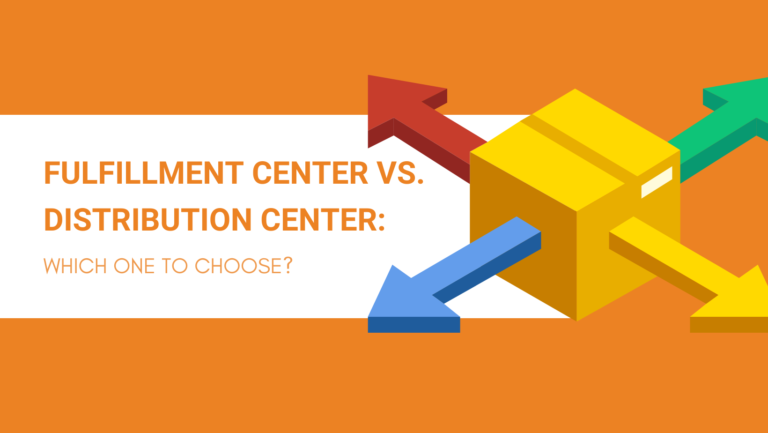Choosing between a fulfillment center vs. a distribution center can be challenging, but the order fulfillment process is what can make or break a business.
The strategic use of fulfillment centers and distribution centers is important for every small business, especially eCommerce companies where speed and efficiency are crucial.
But, these two types of logistics services have such subtle differences, that it can be difficult to decide which one is better suited for your needs. At the end of this article, you’ll know the definition of a distribution center and a fulfillment center, and learn to differentiate them.
So, let’s see what fits you better!
What Is a Fulfillment Center?
The best fulfillment center definition would be a third-party logistics warehousing solution that takes care of receiving, processing, packing, and shipping orders to the end consumer on behalf of different eCommerce stores.
Although fulfillment centers are mainly B2C oriented, they often also work with B2B clients.
The goal of fulfillment centers is to ensure that the end buyer receives the order quickly at their doorstep. So, location matters a lot when choosing a fulfillment center.
Due to the scope of services offered, fulfillment centers store stock for shorter periods as they constantly fulfill orders and replenish stocks.

How Does a Fulfillment Center Operate?
Let’s see some of the general activities of a fulfillment center:
1. Receiving the bulk inventory
First, eCommerce companies will ship their bulk product to the chosen fulfillment center.
The fulfillment center will receive the bulk inventory as agreed beforehand.
Note that some fulfillment centers charge for receiving, while others don’t.
2. Inventory storage
Then, the fulfillment company will store your products in their warehouse space (pallets, bins, shelves, etc. – depending on the size and weight of your products).
Choosing a fulfillment center with warehouses close to your target customers is your best bet. Like this, you can shorten the delivery times.
3. Receiving an order
What follows is receiving orders. As eCommerce stores make sales, they will redirect these online orders to the fulfillment center they work with.
This process is often entirely automated. In the best-case scenario, the eCommerce builder of the store should integrate with the inventory management software of the fulfillment center.
Redirecting orders from your store to your fulfillment center manually might work at first, but not as you scale and your sales volume increases.
4. Pick and pack
As soon as the fulfillment company receives the order, they pick the product (or products) from their warehouse and pack it appropriately.
The types of packaging they use can vary in agreement with the online store. Often, the store will ask for branded packaging, slips, etc. Most good fulfillment centers should be able to offer branded products and packaging.
5. Shipping to the end consumer
Once the order is packed, the fulfillment company will label it and ship it to the end customer’s address.
They should be able to give you (the seller) and the buyer a tracking number so that both parties can follow the shipping process as necessary.
6. Inventory management
Fulfillment centers also take care of inventory management. Typically, they will have software that integrates with your store and shows you your warehouse stock levels.
You should be able to access a dashboard looking at the status of your orders and the inventory stock amounts left. According to these insights, you’ll decide when it’s time to replenish your stock.
7. Additional services
Some fulfillment centers also offer additional services such as product sourcing, product development, kitting, assembling, subscription box fulfillment, crowdfunding fulfillment, etc.
What Is a Distribution Center?
A distribution center is a warehousing solution along the transport route that usually acts as a transit point during the supply chain. It often represents the point when we switch modes of transportation.
Other times, it’s a way for businesses to bring their wholesale stock closer to other businesses and customers such as retail stores.
Usually, distribution centers do not ship directly to customers. They only deliver bulk products from one business to another.
Actually, it’s not surprising to find supply chain structures where a distribution center ships to multiple fulfillment centers, which then ship to the end buyers.
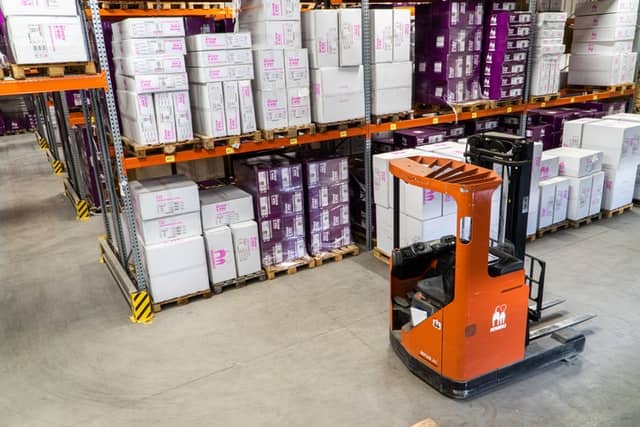
How Does a Distribution Center Operate?
Distribution centers typically deal with B2B businesses. Or, businesses that sell to other businesses. For instance, manufacturers that sell to multiple retailers.
Those are the types of companies that need a distribution center.
So, in this imaginary scenario, these would be the general steps:
1. Receiving a bulk order
Let’s say you’re a manufacturer of skincare products in Switzerland and multiple US retailers agreed to sell your brand. Now, you need a distribution center in the US that will store your products and ship them to different B2B businesses.
So, seen from the distribution center’s point of view, receiving your bulk order is the first step in their operation.
2. Storing the bulk order
Next, they will use their warehouse space to store your order appropriately. This often involves a climate-controlled environment or special conditions such as freezing.
3. Cross-docking (optional)
Alternatively, if the order you’ve sent has already a buyer, the distribution center will act only as a spot to switch transport means.
They will do what we call cross-docking – unloading the stock from one vehicle and reloading it into another one. Cross-docking eliminates the need for storage. However, it’s not always possible.
4. Picking, packing, and kitting
Distribution centers also pick, pack, and kit. But, they do it on a larger scale since they still ship out products in bulk.
For instance, you can send 1000 shampoo bottles in a single package. They will unpack it, repack it, and kit it to only 50 bottles per box.
5. Shipping the bulk order
Finally, the distribution center will ship every order that they receive to the appropriate business buyer using previously agreed upon means.
Fulfillment Centers: Pros and Cons
Now, let’s take a closer look into the advantages and disadvantages of using fulfillment centers for storing inventory and fulfilling customer orders:
Pros
- More services than a distribution center
- Delivering products to the end customers (B2C)
- Better for D2C brands
- No need for own warehouses or storage space
- Faster order processing
- Located close to your customers, allowing for shorter delivery times
- Storing, picking, and packing orders
- Kitting and assembly services
- Custom labeling or packaging
- Private labeling or white labeling
- Outsourced customer support
- Returns management and reverse logistics
- Automation technology (for example, an order management system)
- Extra services available (product development, sourcing, subscription box fulfillment, crowdfunding fulfillment, etc.)
- Easier to scale your business
Cons
- Not suitable for long-term storage
- Higher costs for unsold or dead stock that stays stored for longer
- Pricier due to the value-added services

Distribution Centers: Pros and Cons
Next, let’s go over the advantages and drawbacks of partnering with distribution centers:
Pros
- Ability to handle bulk orders and B2B transactions
- Better prices and more suited for long-term storage
- Sufficient warehouse space to accommodate orders of any size
- Best for goods that don’t need any finishing or packaging
- Good for bringing products in bulk closer to other businesses (customers like retailers)
- Cross-docking services
Cons
- No B2C services (not shipping directly to customers)
- Fewer services than a fulfillment center
- Products are delivered in bulk and on pallets, so there is no packaging service
- Less frequent shipping since products travel in bulk only
Examples of Companies Using Fulfillment Centers
Amazon FBA is a great example of a fulfillment center that many small businesses use. FBA allows them to outsource the entire order fulfillment process – from receiving orders to picking, packing, labeling, shipping, customer support, etc.
So, instead of a small store renting warehouse space and paying overhead for staff, they will outsource everything to FBA. All they need to do is ship their bulk order to Amazon’s warehouses.
Other eCommerce stores decide to go one step further and use sourcing and fulfillment companies all-in-one, like NicheSources.
Our customers literally just need an online store and a product idea. We take care of everything else. They sell, we deal with the end-to-end supply chain operations!

Examples of Companies Using Distribution Centers
Let’s say you see L’Oréal products in the US Walmart. But, L’Oréal is manufactured in France. To streamline the supply chain and make it more agile and efficient, L’Oréal could use one or more distribution centers in the USA.
Now, the distribution centers hold bulk L’Oréal products, and they ship them to retailers or fulfillment centers for further resale.
So, the distribution center will not sell directly to L’Oréal buyers, but to retailers and other businesses reselling L’Oréal products to end consumers.
How to Choose between a Fulfillment Center and a Distribution Center?
A fulfillment center and a distribution center are not the same but they’re also not opposites. They can work complementary, hand-in-hand, or individually. Whether you choose one of them or both depends on your service needs and business model.
So, how to choose between fulfillment and distribution? Easy. Think of what you need. Who is your customer?
For instance, eCommerce companies that sell directly to customers and have no customer service teams will find fulfillment centers better suited to their needs.
So, if you’re a D2C brand, a fulfillment center is what you need.
On the other hand, if you’re not a small business but a larger organization that deals with B2B transactions and selling in bulk, then look into distribution centers or a combination of both distribution and fulfillment services.
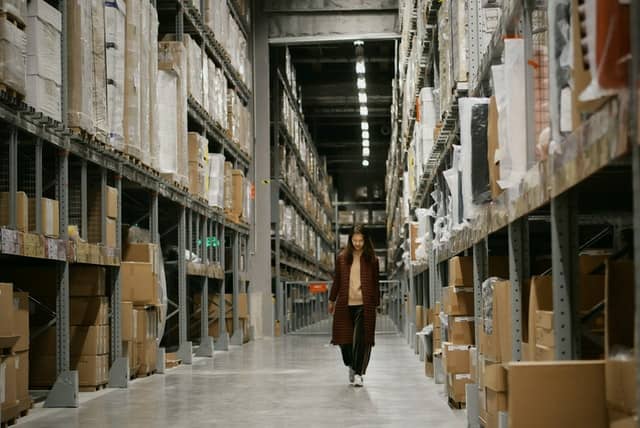
FAQs on Fulfillment Centers vs. Distribution Centers
Last but not least, let’s look at the answers to some of the most frequently asked questions on the debate between a fulfillment center and a distribution center.
What Is the Difference between a Distribution Center and a Fulfillment Center?
When we talk about distribution and fulfillment services or centers, the main differences are the following:
- The target audience – fulfillment centers target end consumers and distribution centers target other businesses.
- The business model – fulfillment centers are B2C, and distribution centers are B2B.
- The scope of services – fulfillment centers offer a broader scope of services than distribution centers.
- The order size – fulfillment centers dropship single orders, while distribution centers ship bulk orders.
- The storage duration – fulfillment centers have a quick turnaround time and are suitable for short-term storage, while distribution centers are better for long-term storage.
- The pricing – fulfillment centers could be a bit pricier due to all the value-added services you get.
What Is the Difference between an Amazon Fulfillment Center and a Delivery Station?
Amazon’s fulfillment centers are designed to process orders and provide an end-to-end supply chain solution to eCommerce stores. Their delivery stations are just the final step before the product reaches the customer. Delivery stations are often the couriers that ship the product to the end buyer.
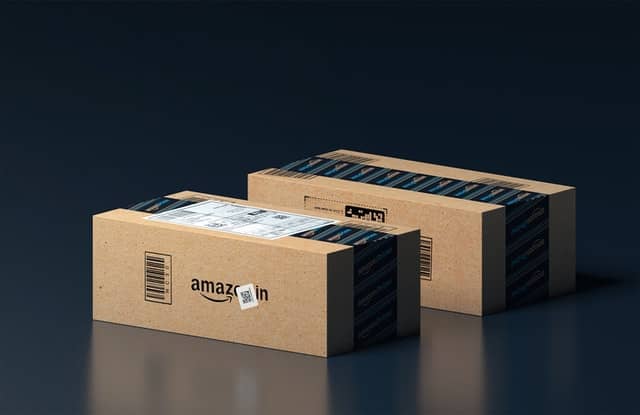
Distribution Center vs. Warehouse: What’s the Difference?
A warehouse serves only for inventory storage and nothing else. Distribution centers, on the other hand, also deal with product mixing, packaging, cross-docking, and order fulfillment to B2B customers.
What Is a Distribution Hub?
A distribution hub is the same as a distribution center – a 3PL warehousing solution that deals with the storage, picking, packing, and shipping of goods to other fulfillment locations or businesses.
Fulfillment Center vs. Sortation Center: What’s the Difference?
The purpose of a fulfillment center is to process and fulfill customer orders. On the other hand, a sortation center deals with sorting and aggregating shipments into different categories based on their location or zip code. All to make the supply chain process more agile and efficient.
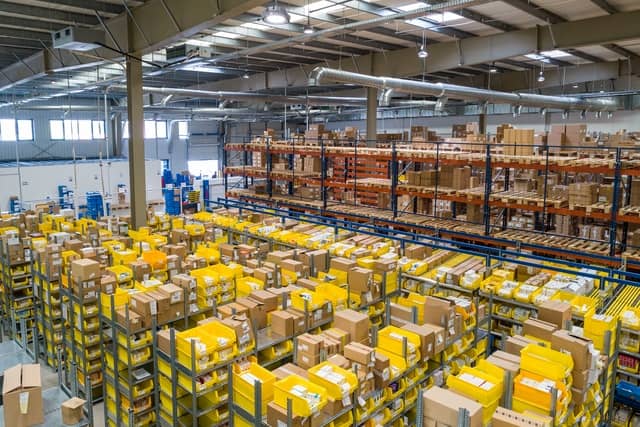
Wrapping Up
On a final note, we’d like to point out that these borders between a fulfillment center and a distribution center aren’t always so clear in real life.
Many distribution centers have expanded their scope of services to be able to accommodate different types of clients like eCommerce and B2C businesses.
For instance, we here at NicheSources allow our B2B and B2C clients to have a completely hands-off experience, regardless if we’re talking about wholesale, dropshipping or private labeling.
We offer an all-in-one solution for retailers, D2C businesses, eCommerce owners, wholesalers, bulk buyers, etc. And, then we take care of everything – from product sourcing to storage, packing, branding, and fulfillment. Try our services with zero risks by getting a free quote!
All in all, we hope you can now make an informed decision when it comes to a fulfillment center vs. a distribution center, and partner with the one that makes sense for your business and customers.
